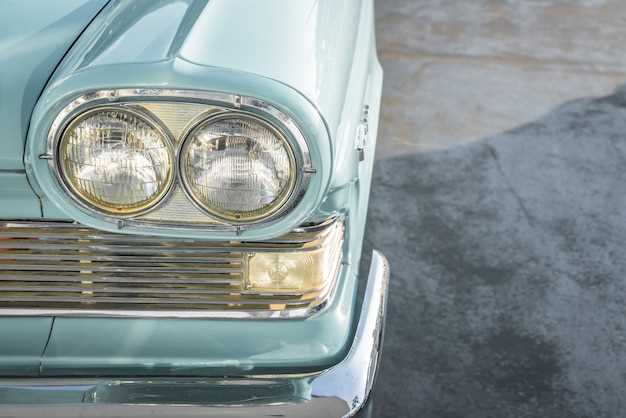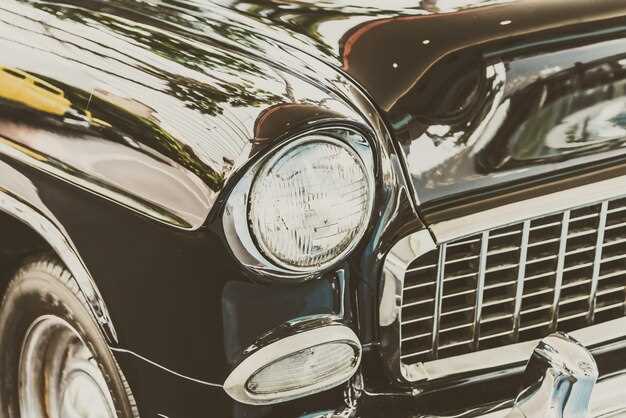
In the world of vintage automobiles, few names resonate like those steeped in history and craftsmanship. Classic cars are not just vehicles; they represent a fascinating blend of art, engineering, and nostalgia. For collectors, understanding the prominent brands that shaped the automotive landscape is crucial, as these names hold value both on the road and in the marketplace.
The allure of classic cars lies in their unique designs and the craftsmanship that often surpasses modern production standards. Each brand has its own story, reflecting the cultural and technological advancements of the time. From the sleek lines of European marques to the robust designs of American classics, these cars invoke a sense of admiration that transcends generations.
In this article, we will explore the top 10 classic car brands that every collector should know. Whether you are a seasoned aficionado or merely stepping into the realm of vintage car collection, understanding these iconic manufacturers will not only enrich your knowledge but also enhance your appreciation for the timeless beauty and engineering prowess of classic automobiles.
Identifying Iconic Classic Car Brands and Their Unique Features
When it comes to classic cars, certain brands stand out due to their rich history, innovative engineering, and distinctive design. Recognizing these iconic vintage brands can significantly enhance a collector’s appreciation and knowledge. Each brand encompasses unique characteristics that define its legacy in the automotive world.
Ford, for example, revolutionized the industry with the Model T, making automobiles accessible to the masses. Its robust engineering and affordability marked a turning point in transportation. The brand’s continued dedication to innovation is evident in timeless models such as the Mustang, a symbol of American muscle cars.
Chevrolet is another hallmark of classic automotive culture, known for its diverse range of vehicles. The Corvette stands out with its exceptional performance and sleek design, while the Bel Air represents the golden age of American automobiles. Both models capture the essence of mid-20th century styling and engineering prowess.
Porsche, synonymous with high-performance sports cars, has a distinct aesthetic that blends elegance and speed. The 911 is perhaps its most celebrated model, featuring a unique rear-engine layout that has defined the brand’s sports car segment since the 1960s. Porsche’s commitment to precision and craftsmanship sets it apart in the classic car realm.
Jaguar’s heritage is deeply rooted in luxury and style, with models like the E-Type becoming icons of automotive design. Its combination of stunning form and powerful performance has captivated collectors and enthusiasts alike. The British brand embodies a sense of sophistication that continues to resonate in vintage car circles.
Italian brands like Ferrari and Lamborghini are synonymous with prestige and unparalleled performance. Ferrari’s rich racing history and distinct designs make its models highly sought after, while Lamborghini’s bold, aggressive styling and powerful engines have created a unique niche in the supercar market. Both brands consistently push the boundaries of automotive excellence.
Recognizing these classic and vintage brands will not only cultivate a deeper understanding of automotive history but also inform collectors about the unique features that contribute to each brand’s legacy. Whether it’s impeccable design, performance, or engineering innovation, these brands have left an indelible mark on the world of classic cars.
Understanding the Market Value and Investment Potential of Vintage Cars

The market for vintage and classic cars has gained significant traction over the past few decades, attracting collectors, investors, and enthusiasts alike. A variety of factors influence the market value of these vehicles, including rarity, brand reputation, condition, and historical significance. Understanding these elements is crucial for anyone looking to invest in classic car brands.
Rarity is a key determinant of a vintage car’s value. Limited production models or those with unique features often fetch higher prices. Brands that have produced iconic cars, such as Ferrari, Bugatti, and Aston Martin, tend to hold their value better due to their limited availability and strong brand heritage. Collectors are often willing to pay a premium for vehicles that symbolize a specific era or technological advancement.
The condition of the vehicle plays a vital role in establishing its market value. Well-preserved and meticulously restored cars typically command higher prices than those in poor condition. Documentation of restoration processes, including receipts and photographs, can enhance a car’s appeal, making it more attractive to potential buyers.
Market trends also impact the investment potential of vintage cars. Certain classic brands may experience fluctuations in demand based on cultural influences, economic conditions, and changing collector preferences. Keeping an eye on emerging trends within the classic car community can provide insights into which brands are likely to appreciate over time.
Moreover, the allure of vintage cars as an investment lies in their potential for appreciation. While some vehicles may initially be affordable, their value can rise significantly as demand increases. Investors should conduct thorough research and seek expert opinions to identify which classic brands are set to gain popularity, ensuring a profitable investment.
In conclusion, understanding the market value and investment potential of vintage cars requires a keen awareness of various influencing factors. Collectors should focus on rarity, condition, and current market trends to make informed decisions about classic car brands that not only capture the spirit of automotive history but also offer promising opportunities for financial growth.
Maintaining and Restoring Classic Cars: Tips for Collectors

Maintaining and restoring classic and vintage cars is essential for any serious collector. Understanding the unique requirements of these brands can significantly enhance both their aesthetic and functional value. Here are some practical tips to help you preserve and restore your classic vehicles.
1. Regular Maintenance: Consistent upkeep is vital. Change fluids, check tire pressure, and inspect brake systems routinely. Make a detailed schedule to ensure that each aspect of your vehicle receives attention, preventing minor issues from becoming major problems.
2. Proper Storage: Store classic cars in a climate-controlled environment. This helps prevent rust and deterioration caused by extreme temperatures or humidity. Utilize car covers to protect against dust and debris, ensuring the paint and interior remain intact.
3. Use Quality Parts: When restoring, always opt for original or high-quality replacement parts. Authentic components not only maintain the car’s value but also preserve its originality. Research reputable suppliers that specialize in classic car parts for your specific make and model.
4. Focus on Detailed Restoration: When undertaking a restoration project, pay attention to the details. This includes restoring the paint, upholstery, and mechanical systems to their original specifications. Document each step of the process, as detailed records can enhance the car’s provenance and marketability.
5. Consult Experts: Don’t hesitate to seek advice from professionals or fellow enthusiasts. Join clubs or online forums dedicated to classic and vintage car brands. Experienced collectors can provide valuable insights into specific models and common restoration practices.
6. Avoid Unnecessary Modifications: Many classic car collectors appreciate originality. When restoring, avoid modifications that compromise the car’s historical integrity. Only consider upgrades that are reversible or easily removable.
7. Educate Yourself: Knowledge is power in the world of classic cars. Study the brand’s history, common issues, and restoration techniques. Books, documentaries, and online courses can provide a deeper understanding of what makes each classic vehicle unique.
8. Networking: Attend classic car shows and auctions to meet other collectors and industry professionals. Networking can lead to potential buyers, sellers, or partners for restoration projects.
By following these tips, collectors can ensure that their classic and vintage automobiles remain in excellent condition, enhancing both their enjoyment of these vehicles and their investment value.
